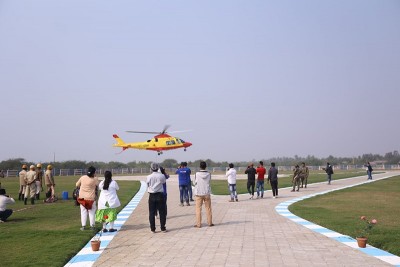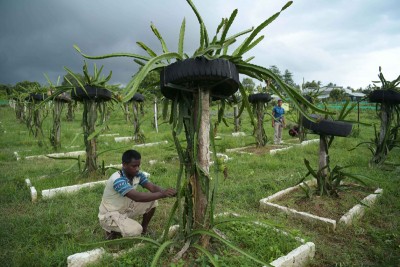UN agency, Swiss scientists team up to crunch genome data to increase animal health
Future joint initiatives include a genetic module for Rift Valley fever – a viral disease that is potentially devastating to livestock and can also be transmitted to humans – and African swine fever, FAO said in a press release.
"The new technology helps us understand biological threats in order to help countries better prevent, respond and ultimately protect the health of humans, animals and the environment," said FAO's Chief Veterinary Officer, Juan Lubroth.
FAO said it chose SIB Swiss Institute of Bioinformatics as a designated reference centre to expand its access to state-of the-art technology.
The Swiss institute, FAO said, is equipped with high performance computers, software, databases and a knowledgebase used for screening and monitoring animal diseases. These, like avian influenza, also known as bird flu, strike animals but can also be transmitted to humans.
Working closely with FAO, SIB experts have developed tools to improve early detection and fast alert systems to prevent and respond to transboundary disease emergencies in poultry or livestock, FAO said.
SIB specializes in bioinformatics, a relatively new science which employs computer technology to study biological data.
Scientists use bioinformatics to gather, process and analyze information on the genomes of pathogens – the genetic material peculiar to specific micro-organisms, such as viruses, bacteria and fungi – that cause diseases in their hosts, according to FAO.
“Such information enables scientists to develop new drugs and targeted treatments as well as improve the effectiveness of existing medicines,” it said.
FAO also said the new technologies play an important role in understanding the nature and dynamics of biological threats, and the food agency in collaboration with SIB, has developed online e-learning courses on bioinformatics in viral pathogens that can help laboratory technicians, physicians, veterinarians and researchers around the world improve their work while increasing access to this emerging field of competence.
FAO Reference Centres are regarded as centres of excellence in providing scientific and technical expertise on issues related to the agency’s mandate.
Among FAO’s three main goals are: the eradication of hunger, food insecurity and malnutrition; the elimination of poverty and the driving forward of economic and social progress for all; and, the sustainable management and utilization of natural resources, including land, water, air, climate and genetic resources for the benefit of present and future generations.
Photo: FAO/Simon Maina
Support Our Journalism
We cannot do without you.. your contribution supports unbiased journalism
IBNS is not driven by any ism- not wokeism, not racism, not skewed secularism, not hyper right-wing or left liberal ideals, nor by any hardline religious beliefs or hyper nationalism. We want to serve you good old objective news, as they are. We do not judge or preach. We let people decide for themselves. We only try to present factual and well-sourced news.







